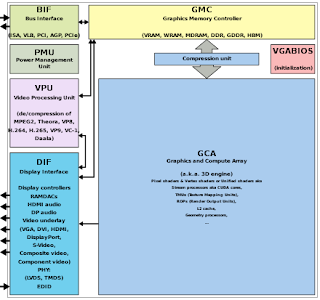graphics processing unit (GPU)


A Internet Protocol version 6 (IPv6) is the most recent version of the Internet Protocol (IP), the communications protocol that provides an identification and location system for computers on networks and routes traffic across the Internet. IPv6 was developed by the Internet Engineering Task Force (IETF) to deal with the long-anticipated problem of IPv4 address exhaustion. IPv6 is intended to replace IPv4.[1] In December 1998, IPv6 became a Draft Standard for the IETF,[2] who subsequently ratified it as an Internet Standard on 14 July 2017.[3][4]
Devices on the Internet are assigned a unique IP address for identification and location definition. With the rapid growth of the Internet after commercialization in the 1990s, it became evident that far more addresses would be needed to connect devices than the IPv4 address space had available. By 1998, the IETF had formalized the successor protocol. IPv6 uses a 128-bit address, theoretically allowing 2128, or approximately 3.4×1038 addresses. The actual number is slightly smaller, as multiple ranges are reserved for special use or completely excluded from use. The two protocols are not designed to be interoperable, and thus direct communication between them is impossible, complicating the move to IPv6. However, several transition mechanisms have been devised to rectify this.
IPv6 provides other technical benefits in addition to a larger addressing space. In particular, it permits hierarchical address allocation methods that facilitate route aggregation across the Internet, and thus limit the expansion of routing tables. The use of multicast addressing is expanded and simplified, and provides additional optimization for the delivery of services. Device mobility, security, and configuration aspects have been considered in the design of the protocol.
IPv6 addresses are represented as eight groups, separated by colons, of four headdresses
digits. The full representation may be shortened; for example, 2001:0db8:0000:0000:0000:8a2e:0370:7334 becomes 2001:db8::8a2e:370:7334.
Main featuresI
Pv6 is an Internet Layer protocol for packet-switched internetworking and provides end-to-end datagram transmission across multiple IP networks, closely adhering to the design principles developed in the previous version of the protocol, Internet Protocol Version 4 (IPv4).
In addition to offering more addresses, IPv6 also implements features not present in IPv4. It simplifies aspects of address configuration, network renumbering, and router announcements when changing network connectivity providers. It simplifies processing of packets in routers by placing the responsibility for packet fragmentation into the end points. The IPv6 subnet size is standardized by fixing the size of the host identifier portion of an address to 64 bits.
The addressing architecture of IPv6 is defined in RFC 4291 and allows three different types of transmission: unicast, anycast and multicast.[5]:
Comments
Post a Comment